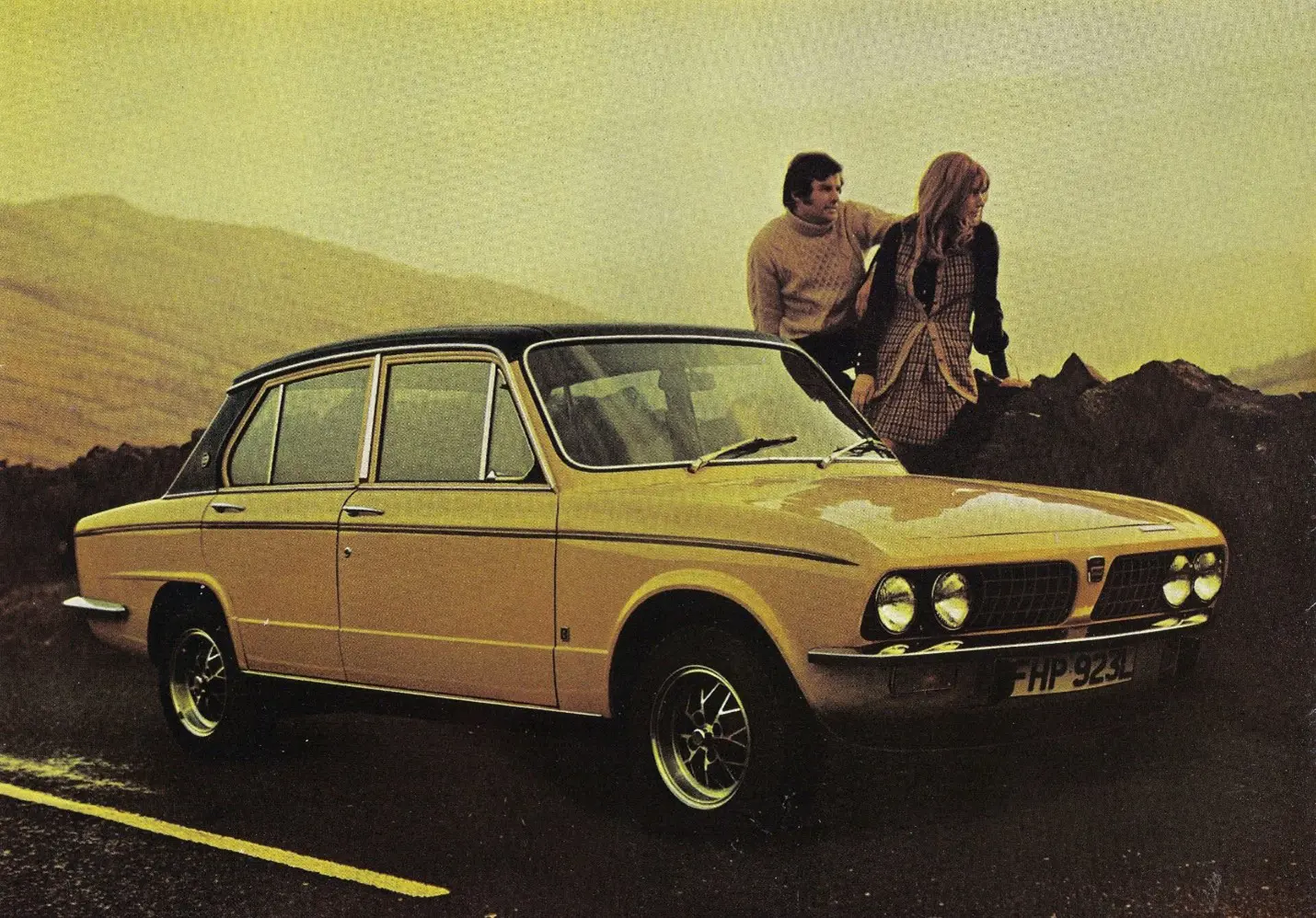Leylandprincess.co.uk seeks new staff to avoid closure
27 January 2023
President and treasurer call it a day after 20 years; club could close if replacements not found.
 A wedge between us (from right)?
A wedge between us (from right)?
Pictured: Club President, Kev Davis; Martin Nancekievill, Club Treasurer; Jeff Davis, member (at the wheel of pre-production chassis 00099, the earliest surviving ADO71, a Morris 18-22 found and restored by the Club (image credit: Kev Davis).
Britain’s largest club for the Austin-Morris-Wolseley 18-22 Series, Leyland Princess and Austin Ambassador, Leylandprincess.co.uk, needs your help – after president, Kev Davis, and club treasurer, Martin Nancekievill, confirmed that they were to stand down from their roles.
Speaking to Lancaster Insurance Services, Kev said: ‘I think I've done all I can for the Wedge movement, as it's always been a rocky path trying to change the perception of these cars but it's a bit better than it used to be.’
Indeed, perceptions – and prices – of good Princesses, otherwise known by its development codename, ADO 71, or nickname, the ‘Wedge’, have been steadily rising in recent years. A 1978 Princess 2 2200 HLS belonging to Kev’s father recently sold on Car and Classic for £7000, having previously appeared in the BBC programme, Holiday of My Lifetime with Len Goodman. Corgi Vanguards also immortalised the car in 1:43 scale, alongside a rendition of James May’s earlier Princess from season 10 of Top Gear.
The car set an ADO 71 sales record, smashing the previous result set by a 1976 Princess 1800 sold by Classic Car Auctions (£5550 in 2021).
The Club, formed in 2003 as the Leyland Princess Enthusiasts’ Club, runs the risk of closure if no-one steps up within what it called ‘a reasonable period’ on the Leylandprincess.co.uk Facebook page, but did not say how long said period might be.
‘If this happens, Club members will be notified how we intend to proceed including any refunds due,’ the statement continued. Kev urged anyone with suitable experience to get in touch via the club email address, leylandprincess@aol.com. His Princess, a 2000 ‘Special Tuning’, from 1980, is currently for sale via Car and Classic.
Kev continued: ‘Basically, anyone with a passion and enthusiasm for the cars is required, plus they have to be able to manage and create website and social media content, be pro-active and attract new owners and members as well as keep the current ones. I'm not hopeful, though! My proudest moments have been when we as a club have been able to rescue some historically significant cars, such as the first ADO71 to be put along the production line to the last Austin Ambassador ever built. We must be one of the few clubs in the world that has the first and last models built among our members.’
The Car Years co-host (and ‘Wedge’ devotee) Alex Riley wished the club well in its search, saying that it needed ‘someone excited by the challenge who's enthusiastic, dedicated, full of ideas and able to inspire others to achieve great things. Above all they should be an excellent Ambassador for the Princess.’ 
Although early interest in the 18-22 Series was strong, industrial action and quality control issues meant that BL was unable to rekindle interest in the car, despite its manifold virtues.
ADO 71, launched in 1975 as the Austin-Morris-Wolseley 18-22 Series didn’t have the easiest time in development, or in the marketplace, either.
Conceived as a replacement for the worthy-but-dumpy Austin 1800, the soft-riding, versatile ‘Landcrab’ did little to woo the public or fleet buyers, who flocked to the equivalent Fords and Vauxhalls in their droves.
The D-segment for medium sized family cars was lucrative if correctly tapped, and that’s precisely what British Leyland wanted to sell: a progressive, front-wheel-drive, Hydragas-equipped alternative the likes of the Cortina and Cavalier.
Work began in 1970 with designer, Harris Mann at the helm, who adapted the wedge profile of the mid-engined Austin Zanda design study into a front-engined, four-door saloon. Early plans specified for the range to be E Series powered, both in four- and six-cylinder form, but the former engines were judged to be underpowered, so the older 1.8-litre B Series was roped in, with the larger 2.2-litre E-Series ‘six’ propelling the more expensive models.
BL’s decision to launch the 18-22 Series as a saloon rather than a hatchback was regarded as controversial at the time, but it took internal pressure and politics off the Rover SD1; Crayford Torcars did offer a hatchback (billed as an Estate) and the 1982 Ambassador, itself a heavily remodelled stop gap replacement between the Austin Montego and Princess, eventually righted this wrong. YouTuber Grand Thrift Auto details more in his video, explaining that it was always Harris Mann’s intention to so equip the ADO 71.
Within a year the range was simplified in naming terms at least: the Austin-Morris-Wolseley 18-2 2 nameplate went away, and the cars were renamed [Leyland] ‘Princess’ as a make/model of its own.
1978’s Princess 2 brought detail refinements, but despite impressive interior space, an excellent ride/handling balance and a strong engine range, the ‘Wedge’ failed to break the Ford/Vauxhall deadlock across the hearts and minds of suburban Britain.
Lancaster Insurance Head of Car Clubs Steph Hoy commented, ‘Car clubs are the heartbeat of our community, not only do they bring together people with a shared passion but they also help preserve not only the cars, but the knowledge and expertise around them. To lose a much-loved car club due to a lack of staffing would be a massive loss to both the owners and our wider community. We congratulate Kev and Martin for all their hard work and wish them well for the future’.
If you would like more information on the club or how you can get involved, please contact Kev Davis on leylandprincess@aol.com
